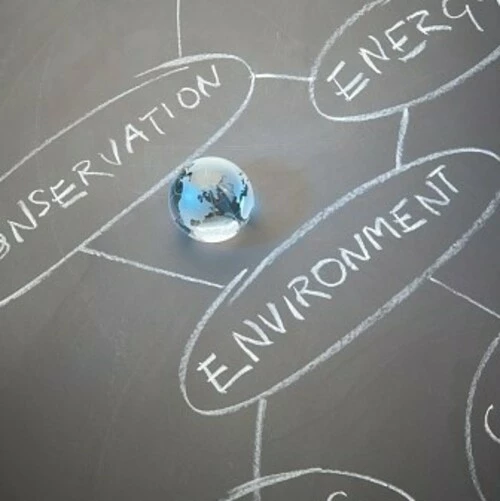
On July 10, 2023, Governor Newsom signed Senate Bill 147 (SB147) into law, amending California’s “fully protected species” statutes. These laws were enacted in 1970 and currently protect 37 species native to California, ranging from the North Pacific right whale (Eubalaena japonica) to the salt marsh harvest mouse (Reithrodontomys raviventris). The amendments enacted by the legislature and signed into law by the Governor create a temporary, 10-year permitting regime that allows proponents of a limited, defined set of projects to pursue authorization from the California Department of Fish and Wildlife (CDFW) to proceed even where they could take (that is, harm) one or more fully protected species. That said, the law creates a novel and seemingly onerous permitting standard. For this reason, it remains to be seen whether this legislative reform effort that was initially billed as permit streamlining will live up to that moniker or become another obstacle to the projects it purports to benefit.
Governor Newsom unveiled a suite of legislative proposals in May 2023 to achieve permitting and project review reform intended to accelerate the building of renewable energy, transportation, and water infrastructure in response to climate change. Among them was a bill intended to repeal the fully protected species statutes and designate all but three of the species protected by those statutes as threatened or endangered under the California Endangered Species Act (CESA). The Governor’s streamlining effort ran into a buzz saw in the legislature, including his effort to repeal the fully protected species statutes. This was the case despite the fact that CESA, modeled on the federal Endangered Species Act, provides robust protection for listed species, including a requirement that anyone seeking to take such species must “minimize and fully mitigate” the impact of the taking.
As amended by the legislature and signed into law, SB147 retains the fully protected species statutes but provides a temporary permitting process, through 2033, for take of such species associated with a limited number of expressly identified activities. The activities for which project proponents may seek a permit are:
- A maintenance, repair, or improvement project to the State Water Project undertaken by the Department of Water Resources.
- A maintenance, repair, or improvement project to critical regional or local water agency infrastructure.
- A transportation project undertaken by a state, regional, or local agency, that does not increase highway or street capacity for automobile or truck travel.
- A wind project and any appurtenant infrastructure improvement.
- A solar photovoltaic project and any appurtenant infrastructure improvement.
Proponents of other types of projects, such as development of affordable housing, continue to have no recourse if those projects are expected to result in the take of even a single individual fully protected species.
As for those entities eligible to seek a permit, they are required to meet a novel, two-part standard. First, they must meet the standard to obtain a permit under CESA, including the requirement that an applicant “minimize and fully mitigate” the impacts of the authorized take. Second, they must satisfy the CDFW that (a) they have taken all further measures necessary to satisfy the conservation standard of Section 2805(d) of the Fish and Game Code and (b) take is avoided to the maximum extent possible as to the species for which take is authorized.
Subpart (a) of this requirement is new and confusing since Section 2085(d) is a definition and not a standard. It also is unclear how any individual project proponent would meet this subpart since the definition of “conserve” that is referenced means the collective methods and procedures necessary to either bring a CESA-listed species to a point where listing is no longer necessary (because it is recovered) or enhance the condition of a non-listed species under CESA so it need not ever become listed. Subpart (b) requires avoidance of take “to the maximum extent possible.” This begs the question, when is it not possible to avoid take? One thing is clear: this temporary permitting regime is certain to bog down the very projects that the Governor prioritized for streamlining.
- Partner
Paul Weiland is Assistant Managing Partner and a member of the Environment & Land Use Group. He has represented clients – including public agencies, publicly regulated utilities, corporations, trade associations and ...
Nossaman’s Endangered Species Law & Policy blog focuses on news, events, and policies affecting endangered species issues in California and throughout the United States. Topics include listing and critical habitat decisions, conservation and recovery planning, inter-agency consultation, and related developments in law, policy, and science. We also inform readers about regulatory and legislative developments, as well as key court decisions.
Stay Connected
 RSS Feed
RSS Feed
Categories
- Alternative Energy
- Bald and Golden Eagle Protection Act
- Budget
- CEQA
- CESA
- Climate Change
- Congress
- Conservation
- Construction Projects
- Consultation
- Continuing Education
- Court Decisions
- Critical Habitat
- Delisting
- Endangered Species Act
- Event
- Fish & Wildlife Service
- Freedom of Information Act
- Government Administration
- Legal
- Legislation
- Listing
- Litigation
- Migratory Bird
- National Marine Fisheries Service
- NEPA
- Off Shore Wind
- Pacific Northwest
- project
- Publications
- Regulatory Reform
- Sacramento-San Joaquin Delta
- SEPA
- Speaking Engagements
- Supreme Court
- Texas
- Timberland
- Water Issues

